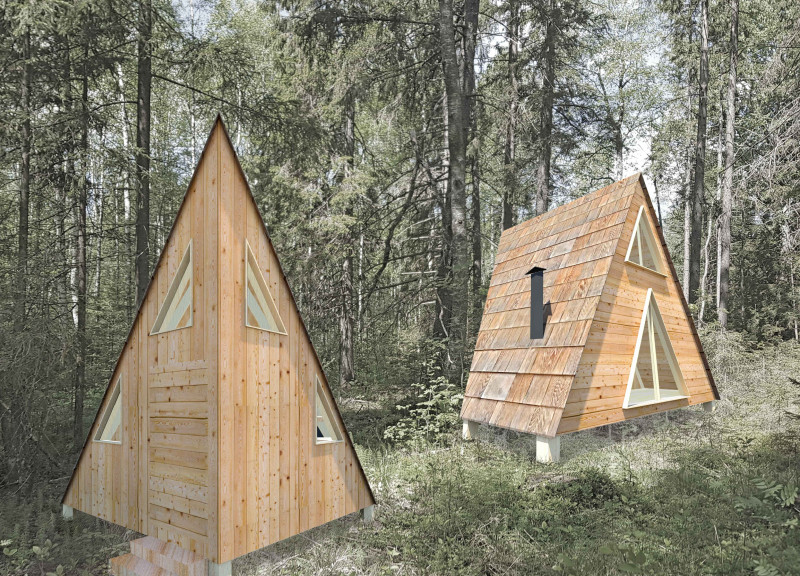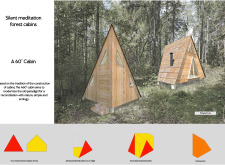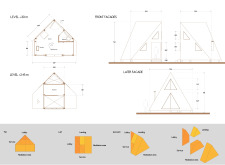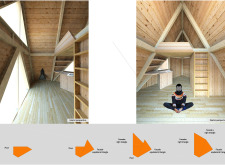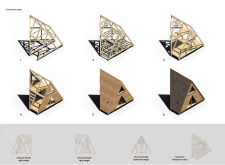5 key facts about this project
The Silent Meditation Forest Cabins project features the A60° Cabin, designed to blend with its forest surroundings while encouraging a deep sense of connection with nature. The aim is to create a space for quiet reflection and meditation. The design modernizes traditional cabin aesthetics, offering a layout that supports both privacy and community interaction.
Spatial Organization
The A60° Cabin presents an innovative spatial layout, consisting of two distinct hut shapes joined perpendicularly. This arrangement facilitates a natural flow among different areas, including a Lobby, Service spaces, a Meditation Area, and a Fireplace on the lower level. A Mezzanine on the upper level enhances versatility, allowing for diverse activities and fostering a sense of comfort.
Facade Design
The facades are an essential part of the design. The front areas include practical functions such as the Entry, Service, Bathroom, Lobby, and Meditation spaces, addressing both utility and aesthetics. Additionally, the lateral facades offer views of the surrounding forest, enabling occupants to connect with nature and enjoy a sense of calm and tranquility.
Interior Geometry
Inside, the design emphasizes geometric simplicity, featuring right and equilateral triangles as key elements. These shapes contribute to both the structural integrity and the overall visual appeal of the space. The layout allows for ample natural light and various sightlines, creating an inviting atmosphere suitable for meditation and relaxation.
Material Context
While specific materials are not detailed in the presentation text, the emphasis on wooden finishes aligns with the project's commitment to ecological principles. The use of wood as a primary material fosters a connection to the environment, highlighting sustainable practices and the natural beauty of organic forms.
Natural light enters through carefully placed openings, casting gentle shadows and creating a warm ambiance that enhances the meditative experience within the cabin.


